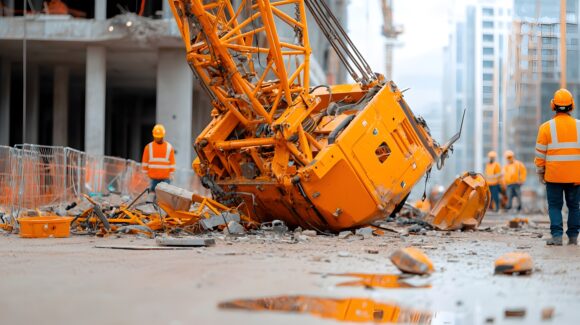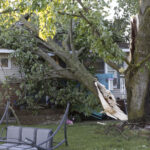A potentially landmark ruling from the Florida Supreme Court, which liability insurers had hoped would greatly expand how much they can recover in subrogation actions, will have to wait for another day.
In the closely watched NBIS Construction and Transport Insurance Services vs. Liebherr-American Inc., a federal appeals court had asked the state high court to clarify the meaning of “economic loss.” But the case settled this month, just days before the justices were set to hear oral arguments.
Attorneys involved in the case could not disclose the terms of the settlement. But the lead lawyer for NBIS, the insurer for a construction crane operator, said the settlement and the legal arguments could prompt courts to consider the true costs when a manufacturer fails to provide a safe product or adequate instruction on the product.
“The courts need to look at the substance of the case, not just what an attorney describes it as,” said Josh Goodman, an insurance subrogation attorney in Miami, with the Cozen O’Connor law firm. “They need to look at the forest as well as the trees.”
The case began in 2018, when a massive crane built by Liebherr, in Germany, was delivered to Sims Crane & Equipment Co., in Tampa. After a Sims crew set the crane to hold a 276-foot boom, the boom collapsed, killing a worker.
The crane was heavily damaged in the collapse. NBIS, also known as NationsBuilders Insurance, paid Sims Crane $3.2 million to cover the cost of the crane, plus $180,000 for removal. NBIS was able to sell the damaged equipment for $1.65 million. That left about $1.74 million, for which NBIS sued the manufacturer in federal court.
Liebherr argued that it had no duty to protect the insurance company against purely economic harms, that its actions were not the cause of the boom’s collapse, and that Florida’s economic loss-limitation rule prevented NBIS from recovering the money.
The often-debated economic loss rule developed largely to protect manufacturers from liability for economic damages caused by a defective product, beyond those damages provided by a warranty. The rule arose in part to limit tort claims when contracts already governed a product or service, the U.S. 11th Circuit Court of Appeals explained.
The Florida Supreme Court in 1993 defined economic losses as “damages for inadequate value, costs of repair and replacement of the defective product, or consequent loss of profits—without any claim of personal injury or damage to other property,” the appellate judges noted. Liebherr lawyers argued that the rule prevents a claim against a product manufacturer when the product damages only itself.
After a trial in 2022, a federal district court judge disagreed with Liebherr’s argument, however, and awarded NBIS the $1.7 million, plus interest. Liebherr appealed.
The crux of Goodman’s and NBIS’ argument is that the claim against Liebherr was not about a faulty product or product liability, to which the economic loss-limitation rule has often applied. Liebherr knew that if pins on the crane boom were not placed in exactly the right position, or that if one of them were moved, it could result in death, injury and property damage, NBIS argued. A similar collapse had happened in 2017 in Japan.
 Yet, the manufacturer did not provide enough training to Sims workers and did not provide a crucial safety bulletin and warning placards to Sims – documentation that would have explained the importance of proper pin placement – until one week after the collapse, NBIS argued.
Yet, the manufacturer did not provide enough training to Sims workers and did not provide a crucial safety bulletin and warning placards to Sims – documentation that would have explained the importance of proper pin placement – until one week after the collapse, NBIS argued.
All other crane operator firms that had purchased Liebherr cranes had received the bulletin, NBIS noted.
“This case is not about a defect in a product but, instead, about a defect in Liebherr’s services provided to Sims,” Goodman and Cozen attorney Jeffrey Greenspan argued in their brief to the state Supreme Court.
No evidence at trial showed a product defect. The NBIS legal team cited a 2013 decision by the Florida Supreme Court, known as Tiara Condominium vs. Marsh & McLennan, to argue that the economic loss rule should not apply in the crane collapse case.
That would make it a negligent service suit, not a product liability claim, Goodman explained. If negligence is proved, an insurance company is likely to recover more in damages than just the cost of the equipment itself.
“Here, the crane did not damage itself due to a defect in the crane,” the NBIS brief argues. “The crane was damaged by Liebherr’s negligent training of the operator and its negligent maintenance of its ownership records.”
The 11th Circuit asked the Florida Supreme Court last spring to clarify once and for all if the loss limitation should apply beyond the cost of the product. Previous court rulings conflicted on the matter, and the federal appeals court said Florida law needed clarifying.
“The Court should answer the Eleventh Circuit’s certified question in the negative,” the NBIS team concluded in its brief. “The economic loss rule has no application to claims outside the context of products liability under this Court’s decision in Tiara.”
But with the case now settled and the terms kept confidential, it will likely take another case to determine the true scope of the economic loss rule.
Goodman said that insurance companies hoping to recover full damages in subrogation claims can take some heart from the outcome. Going forward, insurers can protect their interests by quickly retaining competent counsel after an incident; immediately preserving all evidence; retaining experienced experts to examine the circumstances; and placing all potential defendants on notice – so that evidence is not lost or destroyed.
A Leibherr attorney in the case could not be reached for comment this week, but Leibherr’s brief to the court can be seen here.
Topics Profit Loss
Was this article valuable?
Here are more articles you may enjoy.



 Surveys Show Concerns About Florida Market, But Consumers Are Warming Up
Surveys Show Concerns About Florida Market, But Consumers Are Warming Up  Lawsuit Over Burger King’s Whopper Ads Set Back by Federal Judge
Lawsuit Over Burger King’s Whopper Ads Set Back by Federal Judge  US E&S Outlook No Longer Positive: AM Best
US E&S Outlook No Longer Positive: AM Best  One of Highest Property Claims Severity Recorded in Q3 on Low Volume, Says Verisk
One of Highest Property Claims Severity Recorded in Q3 on Low Volume, Says Verisk 


